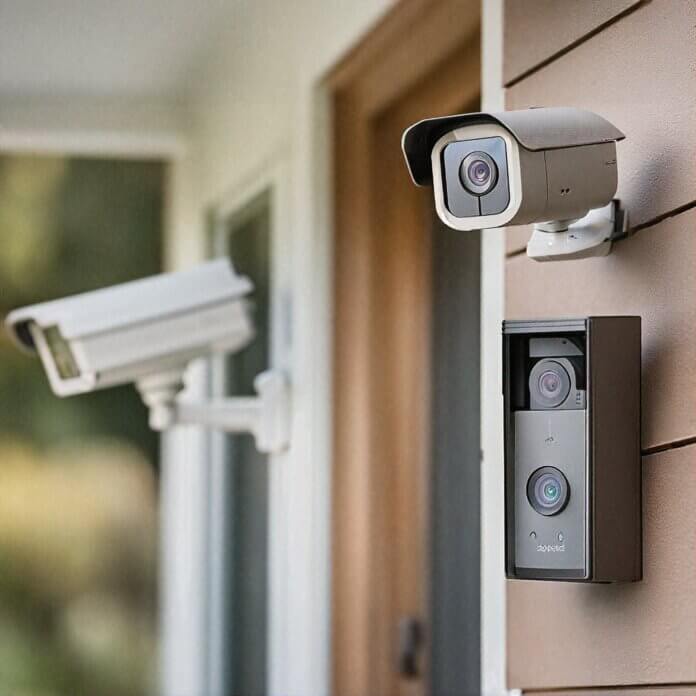How to Make Home Security More Sustainable
Knowing their residence is fully secure gives homeowners peace of mind. However, in a time of heightened climate awareness, it’s just as important to consider how houses are kept safe and align with eco-conscious goals.
Most traditional security measures rely on power-guzzling devices and practices that increase energy consumption. A few smart updates can help homeowners keep their homes both safe and sustainable.
1. Power Security Systems With Renewable Energy
Security cameras, alarm systems, and smart locks run 24/7 to keep houses safe every second of the day. However, this uses substantial energy and can increase a household’s power consumption. One basic internet protocol camera can range between 3 and 10 watts. While this amount may seem small, consider that it operates 24 hours a day for an entire year. The more cameras in a home, the higher the numbers can stack up.
Since these devices cannot be turned off, consider powering them with solar energy. Solar panels can directly power automated gates, surveillance cameras, and motion sensors. Even if someone can’t go fully solar, hybrid systems that draw from renewable and conventional sources can reduce reliance on fossil fuels. Many newer security devices come equipped with low-energy modes and battery backups. Using more energy-efficient models can lead to long-term savings and a reduced carbon footprint.
Additionally, consider strategic camera placement instead of putting one in every corner of the home. A front-door camera is practical for surveillance, as 34% of intruders typically enter through the main entrance.
2. Install Motion-Sensor Lighting Instead of Always-On Lights
Outdoor lighting is a critical deterrent for intruders, but it’s also one of the biggest power drains in many homes. In the U.S., the average system uses 120 terawatt-hours of electricity — enough to power New York City alone for a year. Leaving security lights on overnight contributes to excessive electricity usage and light pollution.
Motion-sensor lights are an innovative, eco-friendly solution. They stay off when not needed and activate only when they detect movement. Opt for residential LED lighting and Energy Star-rated products that use 75% less power than conventional bulbs. A more effective solution is to utilize solar-powered motion lights, which combine two environmentally friendly practices in one.
3. Use Energy Monitoring Tools to Track Consumption
Many homeowners don’t realize how much power their security setups use, mainly if they include round-the-clock surveillance, alarms and smart locks. Smart meters help them track electricity consumption and identify which components are the most energy-intensive. For example, an outdated digital video recorder security camera system could consume more power than newer cloud-based or battery-powered alternatives. Transparency helps homeowners make informed decisions about which upgrades to make.
4. Select Security Devices Made From Sustainable Materials
Beyond electricity use, consider the material a home’s security system is made of. Many low-cost cameras, locks, and devices are built with plastics and metals that are difficult to recycle, adding to landfill waste once they become obsolete.
Instead, seek brands that prioritize recyclable materials, offer take-back programs, or use minimal packaging. Products certified by sustainability standards, such as Energy Star, or those that are Restriction of Hazardous Substances (RoHS)-compliant, are better choices for eco-conscious consumers. Investing in durable devices also reduces the frequency of replacements — another way to lower someone’s environmental impact over time.
5. Incorporate Natural Landscaping for Passive Security
Security doesn’t have to come in the form of tech alone. Strategic landscaping, incorporating trees, hedges, and dense shrubbery, can serve as natural barriers that prevent unauthorized access. This is particularly beneficial since 23% of burglaries are window break-ins, second only to unwanted front door entry.
For example, thick hedges under ground-floor windows deter intruders while reducing visibility from the street. At the same time, these plants help absorb carbon dioxide, cool surrounding areas and provide shade to minimize heat transfer through windows.
A single tree could absorb 25 kilograms of carbon annually, and shaded areas get 20 to 45 degrees Fahrenheit cooler than directly lit areas. Homeowners could be cooling their homes and reducing their carbon footprint while ensuring their day-to-day safety.
6. Choose Security Vendors With Green Practices
When upgrading or installing new systems, choose service providers that prioritize sustainability. Consider answers to these questions:
> Do they offer energy-efficient products?
> Do they recycle old devices after upgrades?
> Are their operations powered by renewable electricity?
Many leading brands in home security emphasize environmental friendliness as part of their corporate mission. Look for transparent companies that publish sustainability reports, commit to carbon neutrality or offer eco-friendly installation options. Choosing a green partner helps multiply the impact of individual efforts.
7. Educate Household Members and Make It a Lifestyle
No system is truly sustainable unless the people using it understand and support its goals. Discuss things with all household members about:
> Turning off unused lights
> Regularly updating firmware for improved energy efficiency
> Checking for power leaks or device malfunctions
Safeguard Homes Sustainably
There’s no need to sacrifice energy-saving habits to ensure a home is safe and secure. Aligning values with actions and efforts can make the difference between a secure house that drains and one that saves. These strategies help homeowners shrink their environmental footprint while protecting their family, loved ones and property.
